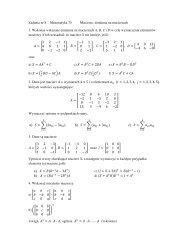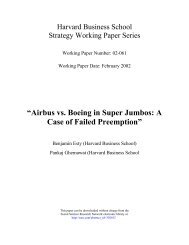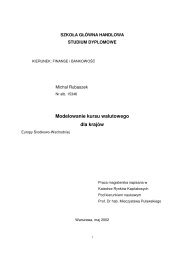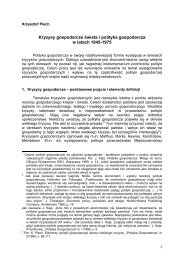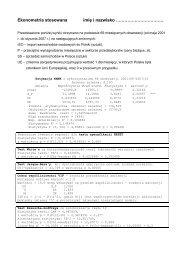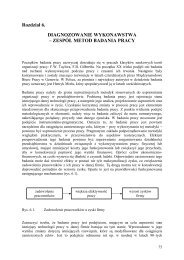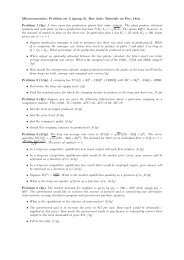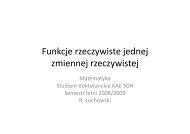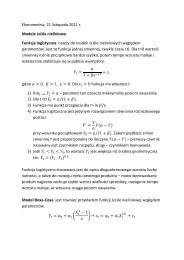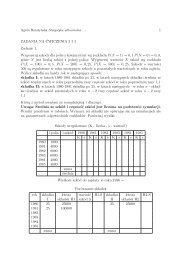Problem sets for Microeconomics II [110051-0471]
Problem sets for Microeconomics II [110051-0471]
Problem sets for Microeconomics II [110051-0471]
You also want an ePaper? Increase the reach of your titles
YUMPU automatically turns print PDFs into web optimized ePapers that Google loves.
a. If eight units of the product are to be manufactured, which type of the factory<br />
should be chosen How many units need to be produced to justify building<br />
type A factory<br />
b. Suppose the manufacturing company owns two factories (one of each type).<br />
If the total production is big enough it is optimal to maintain production in<br />
both factories. Explain why. Let us assume that planned production is 22<br />
units. How the production should be divided between factories to minimize<br />
cost of production<br />
Exercise 3.9. A multinational firm produces steel at a home facility and at a <strong>for</strong>eign<br />
subsidiary. The demand <strong>for</strong> the product is different at home and abroad.<br />
Furthermore, the production costs are different at both facilities. The home demand<br />
is P H = 260 − .1Q H , and <strong>for</strong>eign is P F = 240. The respective cost curves<br />
are: C H = 1, 000 + .4Q 2 H , and C F = 5, 000 + .25Q 2 F .<br />
a. Due to taxes or import quotas your products are not shipped overseas. Find<br />
firm’s profit-maximizing outputs, sales quantities and prices <strong>for</strong> both home<br />
and <strong>for</strong>eign market.<br />
b. Suppose that the fiscal constraints are lifted. (Shipment cost is negligible).<br />
Answer the questions in a. once again.<br />
c. Suppose the shipment cost is $16 per ton. Answer the questions in a. once<br />
again.<br />
Exercise 3.10. A firm produces according to the following production function:<br />
Q = K 1/4 L 3/4 , where Q - units of output, K - units of capital, and L - units of<br />
labor. Suppose that the price of K is $4 per unit, and the price of L is $6 per unit.<br />
What is the optimal capital/labor ratio<br />
Exercise 3.11. Ranger construction is preparing to repair potholes, under contract<br />
to the local county road repair agency. Based on past experience, Ranger has<br />
found that output can be described by: Q = K 1/2 L 1/2 , where Q - pot holes filled,<br />
K - units of capital, and L - units of labor. Ranger can hire labor at $12 per unit,<br />
and the cost of capital is $8 per unit. Capacity limitations require that Ranger<br />
accept no more than $96,000 worth of filling this season.<br />
a. What is the optimal mix of inputs <strong>for</strong> Ranger<br />
b. How many potholes should Ranger agree to fill<br />
8


![Problem sets for Microeconomics II [110051-0471]](https://img.yumpu.com/32645692/8/500x640/problem-sets-for-microeconomics-ii-110051-0471.jpg)

